The pig-nosed dragon head column was slowly lifted out of Pit No. 8
In mid-June this year, in the last large-scale live broadcast of the Sanxingdui site, it was located in Pit No. 8 Although the pig-nosed dragon head columnar utensil has not been extracted, it was already above the utensil layer at that time, and it stood in front of the camera imposingly.
After the live broadcast, the archaeological excavation work continued. After more than a month of busy work, after extracting “a lot” of bronze figures, yesterday (August 4) At 3 o’clock in the afternoon, this eye-catching artifact was finally officially lifted out of Pit No. 8. More details about it are also displayed more clearly. Among them, under the broad “pig nose” of the head of the utensil, the dense teeth in the relatively unremarkable mouth are extremely special: it is the Sanxingdui sacrifice pit that had many teeth before. There are found “Yazhang” forms.
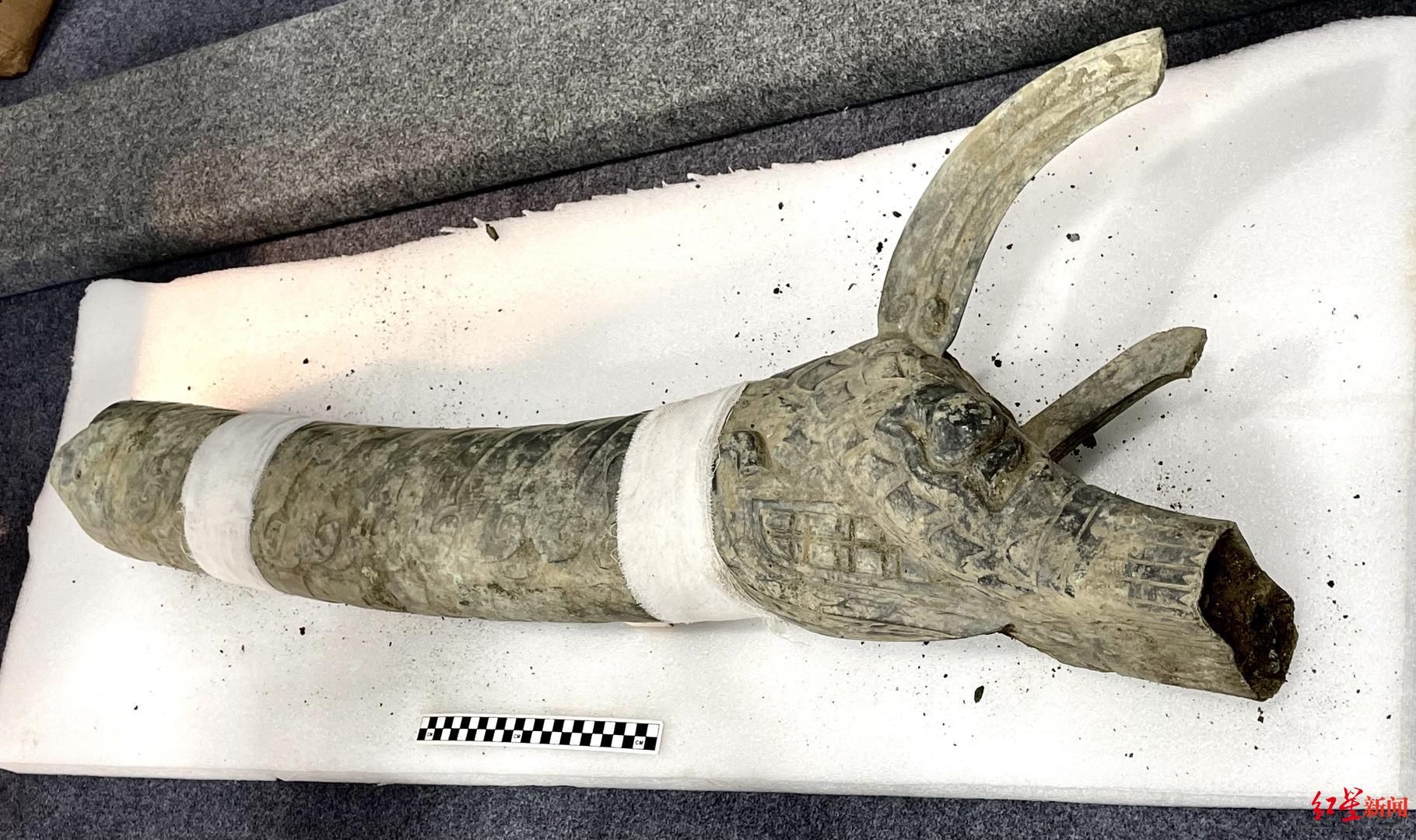 Leader Column
Leader Column
The 1.2-meter-long “Dragon” came out of the pit and lost his left ear
This pig-nosed dragon is 1.2 meters long, 38 cm high, and has a head width (between the eyes) The span>20cm, the body width is 12cm, the whole is in the form of quadrant symmetry, and there is a seam on the head and body. The whole object is in the shape of a long column, with a wide nose on the dragon head, a long ear on the right, and a single horn in the middle of the forehead. The body is evenly distributed with scale patterns and a series of feather-like patterns. The overall shape is peculiar and elegant. 8 Zhao Hao, the person in charge of the pit and associate professor of the School of Archaeology and Museology of Peking University, introduced in an interview with the Red Star News reporter at the scene: The artifact has been exposed relatively completely in the pit before, but it has been made a long time whether its left ear still exists. judgment. “Because at the beginning, between the left ear and the right ear, that is, the position of the head, there was a bronze figure of a human figure pierced in and pressed on it. So we took that figure away first, and then brought this one up. Faucet cylinder. At that time, I was afraid that its left ear would be crushed by something on it.” What surprised them was that the broken left ear was not seen in Pit 8, maybe it was not later It was broken in the pit, but was first broken and then thrown into other pits. After this “big dragon” came out of the pit, the archaeological team members at the site gathered around the long wooden box that contained it, carefully inspected it, and talked a lot. Kind of like a crocodile”… Zhao Hao said that the appearance of this utensil is obviously not a direct reproduction of a real animal. It is very likely that the ancient Shu people created an imaginary object with a variety of animal images, and it has exaggerated deformation. “As far as I know, there is no ancient document that mentions the existence of crocodiles in Sichuan more than 3,000 years ago, and if it looks like a crocodile, then the crocodile has a long snout instead of a nose. The head of this dragon-shaped column is under the nose. There are also mouths.” The big nose is the small mouth and the mouth is full of teeth The most interesting secret is Hidden in the mouth that cannot be seen in this picture: they found many tiny “teeth” in the mouth of the faucet columnar, which were shaped exactly like the teeth of Sanxingdui. Zhao Hao told the Red Star News reporter that a batch of bronze small standing men unearthed before were decorated with such a yazhang, and the dragon-shaped artifact unearthed in pit 7 also had a yazhang on the head. “This discovery also subverts our previous concept – we used to think that there is only one way of using the yazhang. At present, the mode of its appearance is not single, it may be used by others, or it may be used by others.It may be used as a decoration on clothes, or even depicted on other utensils as decoration, etc. It is possible. “ What is Yazhang? What does it mean? Xiang Ming, director of the Zhejiang Provincial Institute of Cultural Relics and Archaeology, introduced the Yazhang in the article “On the Shape and Use of the Yazhang”: “The Yazhang is a The representative and important jade from the Longshan period to the Erlitou culture period originated in the Yellow River Basin and prevailed in the middle and upper reaches of the Yellow River… During the Shang and Zhou Dynasties, Yazhang gradually withdrew from the stage of jade, but was reborn in Sanxingdui and Jinsha in the Chengdu Plain. , and then spread to South China and even Vietnam. “ The characteristic shape of Yazhang is a long strip with a forked shape at the top. Could it fit the image of some kind of nature’s creation? Fang Ming told the Red Star News reporter that he thinks Yazhang’s ” Teeth may mean the “bud” or “bud, stamen” of a plant. Tender buds and flower buds signify spring and new life, as well as the vitality of nature. The figurine holding Zhang Zhang unearthed in Sanxingdui Pit No. 2 “Look carefully at the shape of the flower buds on the Sanxingdui sacred tree. It is imagined to be flat, and its shape is very similar to that of Yazhang. Fang Ming said, “The sacred tree is alive. There are flowers and birds on its branches. On the two great sacred trees unearthed in Sanxingdui Pit No. 2 in 1986, the birds standing on the flowers are very eye-catching. The flower may be Yazhang.” “ In the uninhibited imagination of the ancient Shu people, “flower buds” and “tender shoots” can not only bloom on the heavenly tree, but also grow into the mouth of the “sacred dragon”, which is truly breathtaking. , which also adds a touch of fantasy to the unearthed of this pig-nosed dragon-shaped column. The pit is full of “human heads”. Only a small half extracted < /section> In addition to the pig-nosed dragon-shaped cylinder, a round statue was extracted from pit 8 yesterday. “This round statue is a relatively common type of artifact in Sanxingdui. Zhao Hao said, “There are at least four Yuankou Yuanzun that have been found in Pit No. 8, and the second one was extracted today. “Red Star News reporters saw at the scene that the inside of the Yuanzun has been filled with ivory slag and soil. According to the situation in the bronze scorpion of the bronze statue extracted before, it is very likely that there are sea shells and jade objects in the inside of the statue. The specific situation We have to wait for further cleaning up by cultural experts. What new utensils will be “queued up” for the next step? According to Zhao Hao, in the past month or so, a number of large bronze statues, copper pots and There are more than 20 heads of bronze figures. “There are many heads of people in pit 8, there are about 70 heads of people in total, which means that there are still more than 50 heads of people scattered in the pit waiting to be extracted. “ Red Star News reporters saw at the scene: The big-mouthed beast that was called “robot dog” by netizens and was analyzed by experts as “Flying Elephant”, although the body Part of it has been completely exposed, but because there are still a lot of utensils on its ears, it is estimated that it will need to wait patiently until the end of August to “fly out” of Pit 8. Red Star News reporter Qiao Xueyang Intern Wu Yifan Photography report Editor Duan Xueying Archaeologists are preparing for extraction in pit 8
Archaeologists are preparing for extraction in pit 8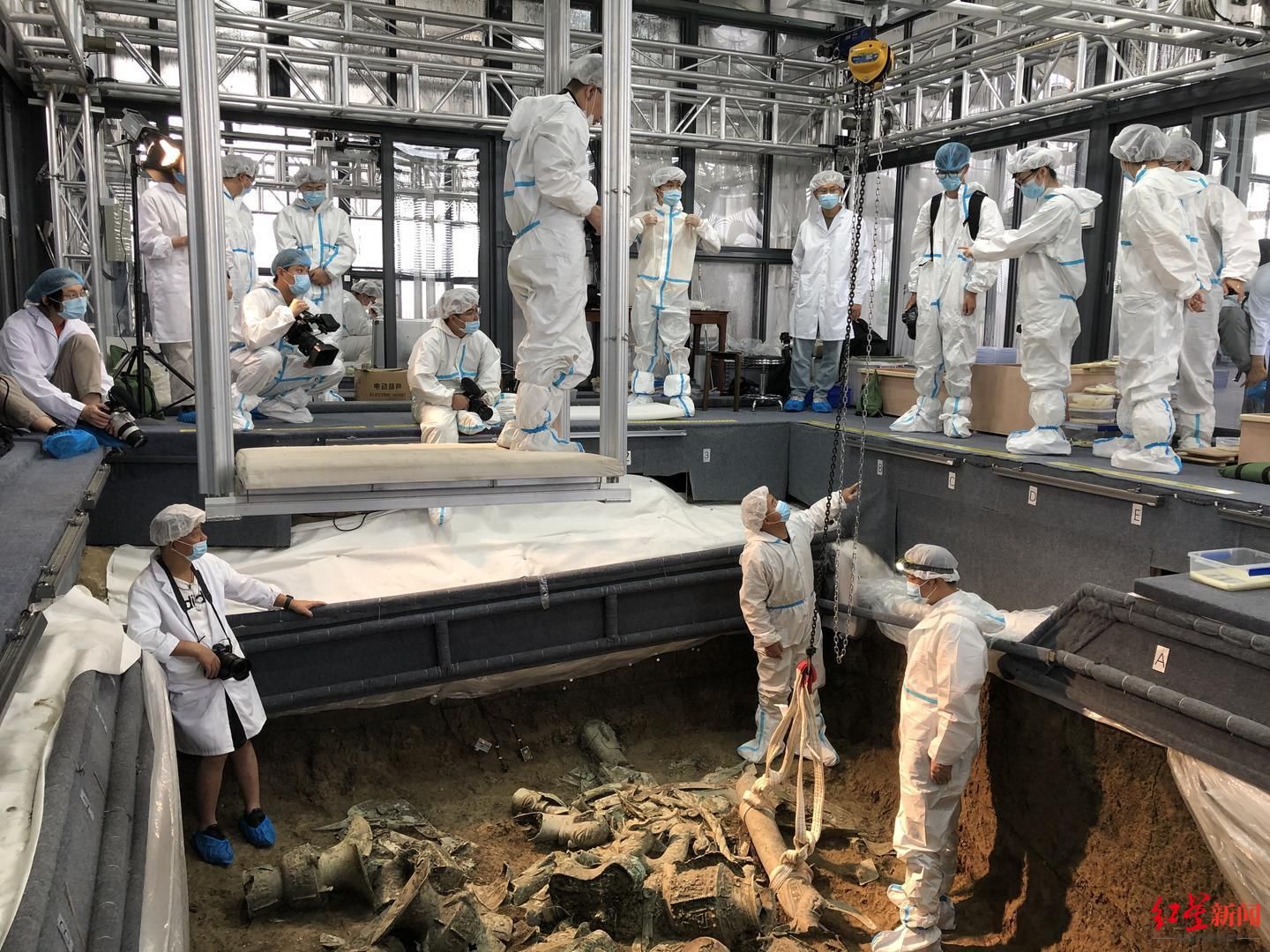 The archaeologists were preparing for the extraction in Pit 8
The archaeologists were preparing for the extraction in Pit 8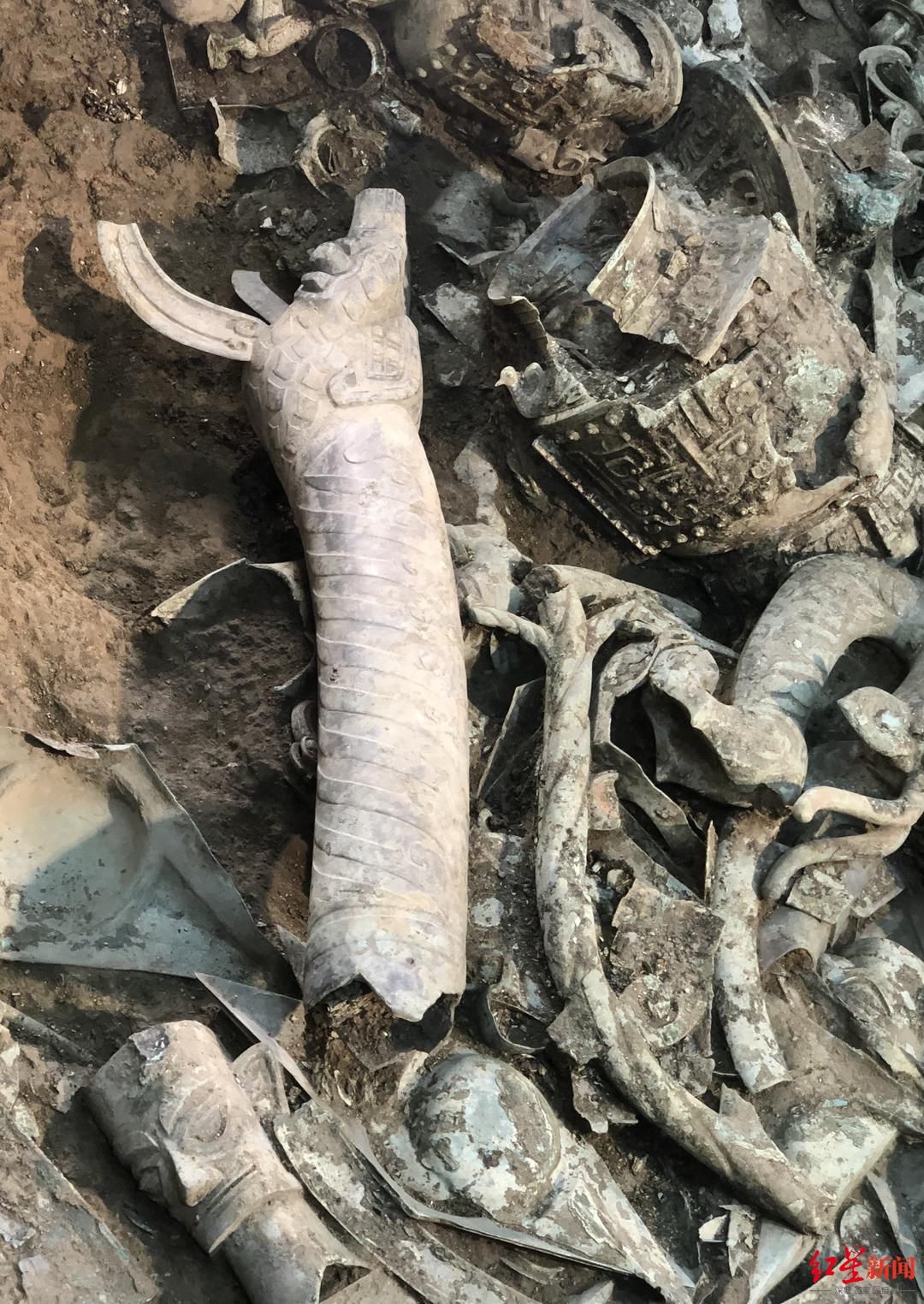 The “last moment” before the pig-nosed dragon head column left pit 8
The “last moment” before the pig-nosed dragon head column left pit 8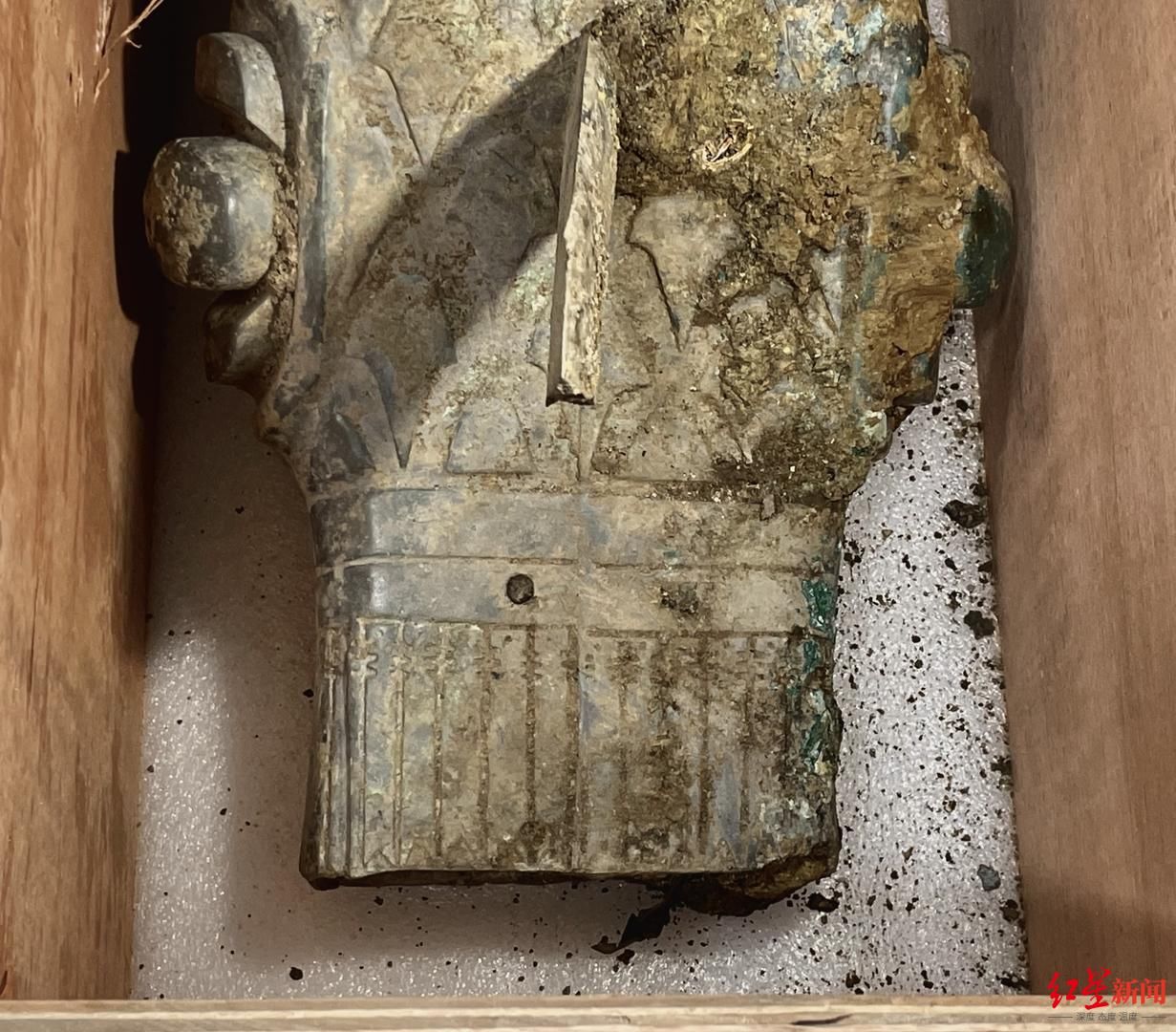 The “faucet” part of the column
The “faucet” part of the column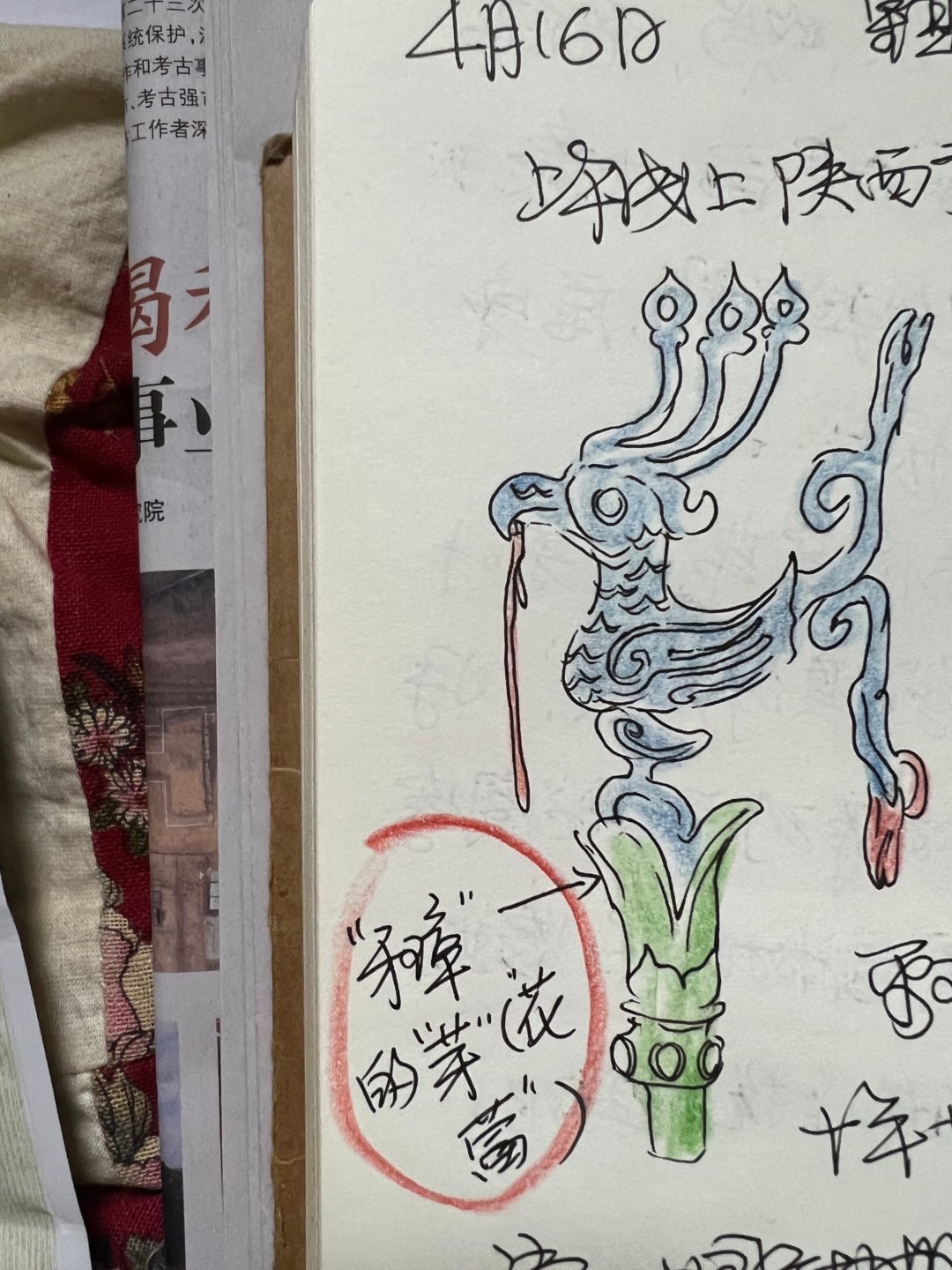 A hand-painted standing “bud” ( The divine bird on the Yazhang
A hand-painted standing “bud” ( The divine bird on the Yazhang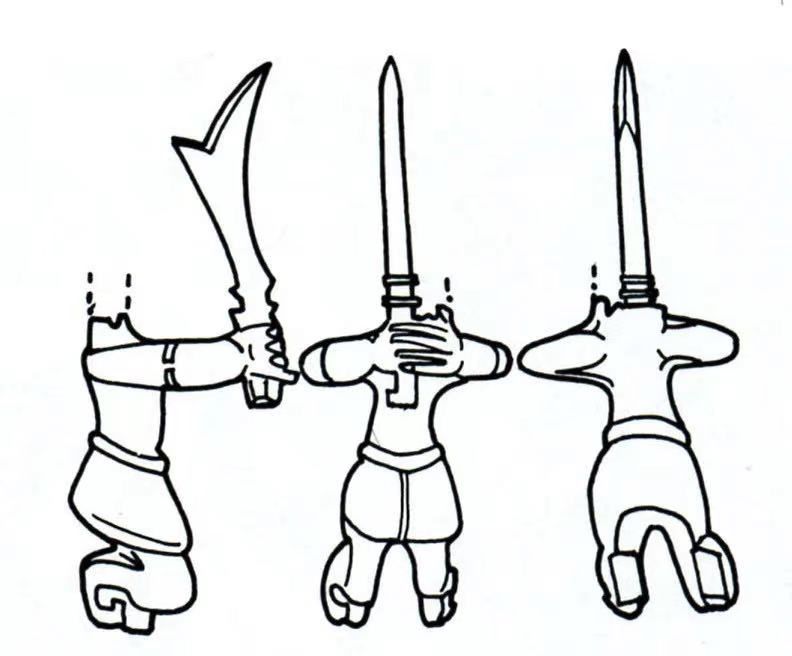
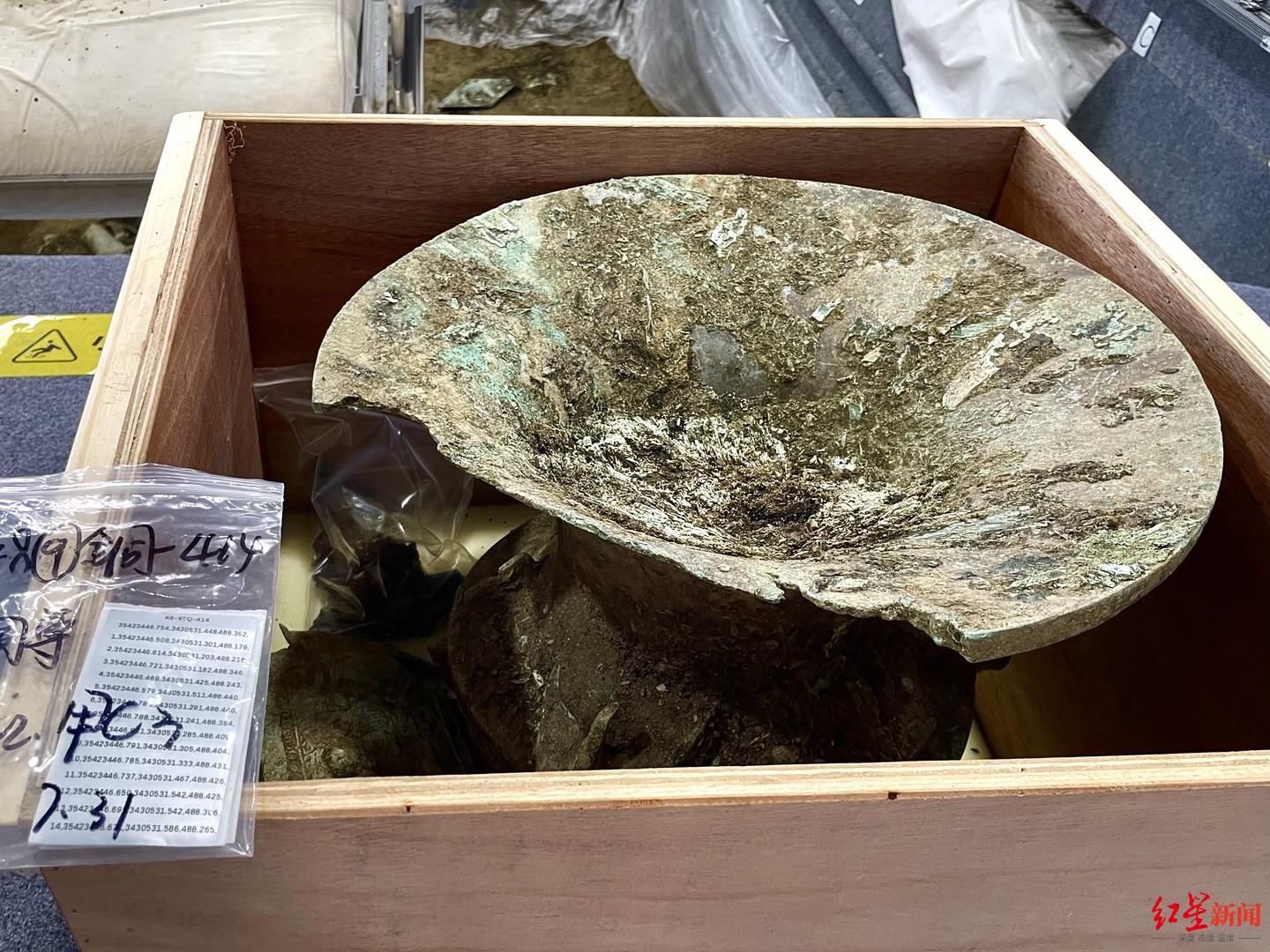 The round statue extracted on the same day as the faucet cylinder
The round statue extracted on the same day as the faucet cylinder